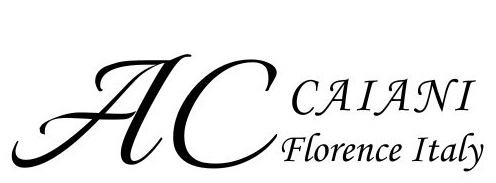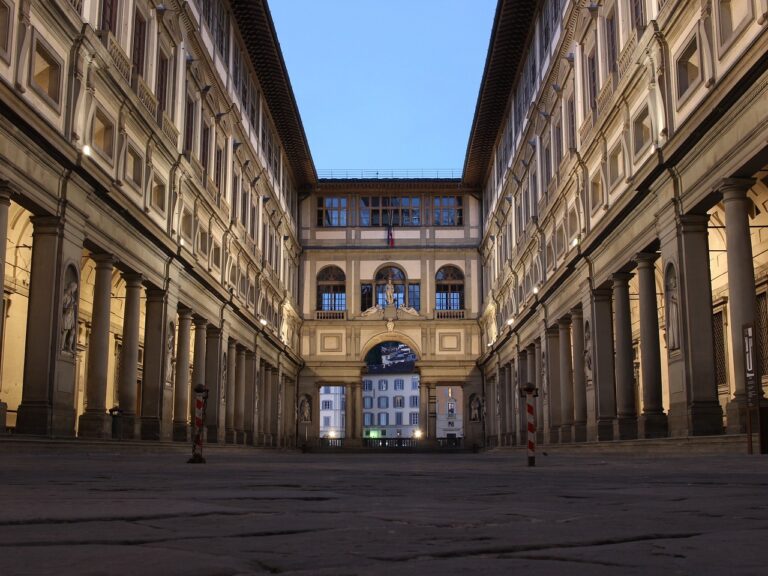Palazzo Vecchio & Uffizi Gallery: Florence’s Twin Pillars of Power and Art
In the heart of Florence’s historic center, two monumental institutions stand side by side—Palazzo Vecchio, the city’s medieval town hall, and the Uffizi Gallery, one of the world’s most celebrated art museums. Together, they embody the essence of Florentine Renaissance, where politics and creativity flourished in tandem.
Palazzo Vecchio: The Fortress of Florentine Power
Built in 1299, the Palazzo Vecchio—literally “Old Palace”—has long served as the symbol of civic authority in Florence. Originally designed to house the Signoria, the city’s governing body, it later became the residence of the Medici family, cementing its role in Tuscany’s political and cultural history.
Architecture & Towering Presence
The palace’s fortress-like design features massive stone walls, Gothic arches, and the iconic Torre di Arnolfo, which rises 94 meters above Piazza della Signoria. Its crenellated battlements and austere facade evoke the turbulent power struggles of medieval Florence.
Visitors can climb the tower for panoramic views of the city, including the Duomo, Arno River, and the Tuscan hills beyond.
Interior Highlights: Where Art Meets Authority
Step inside and you’ll discover a treasure trove of Renaissance art, political symbolism, and architectural splendor:
| 🏛 Room | 🌟 Highlights |
|---|---|
| Salone dei Cinquecento | A vast hall with frescoes by Giorgio Vasari, originally used for meetings of the Grand Council |
| Studiolo of Francesco I | A secretive chamber filled with curiosities, alchemical symbols, and miniature artworks |
| Apartments of the Elements | Lavish rooms themed around earth, air, fire, and water, adorned with mythological frescoes |
| Hall of Maps | A unique collection of ancient maps and a giant globe, reflecting Florence’s global ambitions |
Today, Palazzo Vecchio functions as a museum, offering guided tours, interactive exhibits, and access to original sculptures, paintings, and historical artifacts.
Uffizi Gallery: The Cradle of Renaissance Art
Just steps away from Palazzo Vecchio lies the Uffizi Gallery (Galleria degli Uffizi), a Renaissance masterpiece designed by Giorgio Vasari in 1560. Originally built to house the administrative offices (uffizi) of Florence, it was transformed into a private gallery by Francesco I de’ Medici in 1581, showcasing the family’s vast art collection.
Architectural Elegance
The U-shaped building opens onto the Arno River, with a long courtyard that connects to Ponte Vecchio via the Vasari Corridor—a secret passage used by the Medici to move between the Uffizi and Pitti Palace without stepping into the streets.
Artistic Treasures: A Journey Through Genius
The Uffizi Gallery houses one of the most comprehensive collections of Italian Renaissance art in the world. Its rooms are arranged chronologically, allowing visitors to trace the evolution of artistic styles from the 13th to the 18th century.
Must-See Masterpieces
- Sandro Botticelli: The Birth of Venus, Primavera
- Leonardo da Vinci: Annunciation, Adoration of the Magi
- Michelangelo: Doni Tondo
- Raphael: Madonna of the Goldfinch
- Titian: Venus of Urbino
- Caravaggio: Medusa, Bacchus
The gallery also hosts special exhibitions that spotlight individual artists, historical themes, and newly restored works.
Why Visit Palazzo Vecchio and the Uffizi Gallery?
Together, these landmarks offer a complete immersion into Florence’s soul—from the political intrigue of Palazzo Vecchio to the artistic brilliance of the Uffizi. Whether you’re a history lover, art enthusiast, or curious traveler, this duo promises an unforgettable experience.

